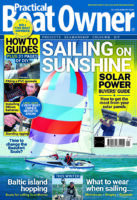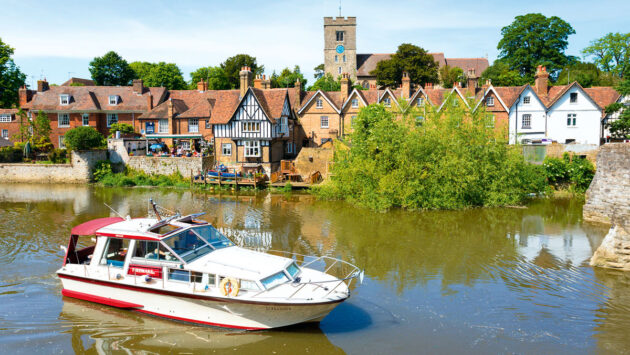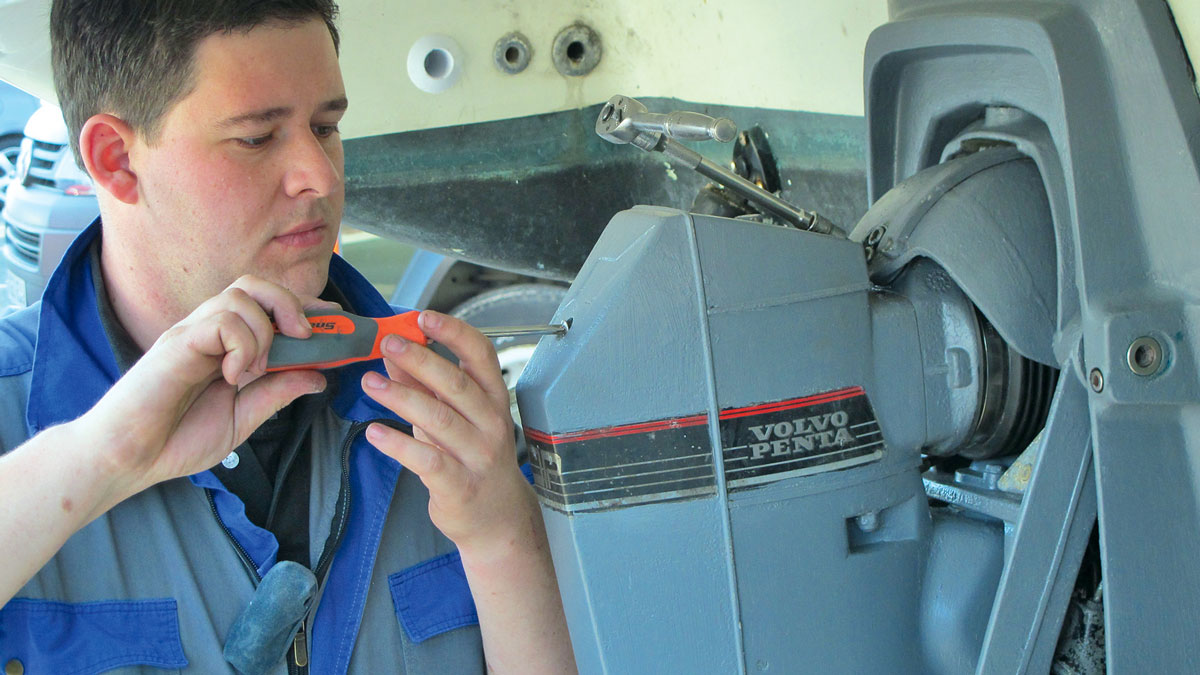Machiel Lambooij, joint secretary of the Cruising Association’s Motorboat Section, shares his expert river boating knowledge
Canals are man-made waterways with little or no natural current. They’re usually narrow, shallow and typically calm, making them ideal for relaxed cruising, writes Machiel Lambooij.
Rivers without stream are natural watercourses where flow is minimal, often due to weirs or locks that regulate water levels.
They are similar to canals, but can be wider and deeper. Rivers with a steady stream require more attention, as the stream can affect boat handling, especially when mooring or departing from a berth or manoeuvring around bridges or harbour entrances.
The stream can vary with rainfall or drought conditions, and navigation may be more challenging.
Tidal rivers are influenced by the ebb and flow of tides, creating potentially strong currents that change direction periodically.
They demand careful planning for timing and handling, especially when entering marinas or locks and when navigating bridges.
Preparation for boating on a river or canal is key
A good up-to-date chart or pilot book, like one of the Nicholson’s Waterway Guides, is essential.
Also, consult the website or app from a river authority before you depart (eg www.gov.uk/check-river-conditions-and-closures) to find out crucial information, such as lock and bridge operating hours, height and width clearance of bridges and locks, tidal tables, VHF channels, speed restrictions, and ferry crossing points, as well as lock closures, current river levels and warnings.

Know your boat’s air draught and bridge clearance limits. Credit: toonm8/Alamy
You can also subscribe to warning e-mails.
On tidal rivers, planning, especially of the timing of your cruise, is everything.
If you are new to tidal rivers, ask the harbour master or fellow boaters for tips before you depart.
Follow the speed restrictions to minimise bank erosion and creating danger for others; give way to sailing sailboats and rowing boats.
Understand the priority rules at bridges, locks and tight passages along with the required horn signals.
When travelling upstream in rivers with a current or tidal stream, you’ll need sufficient engine power.
Ensure your motor has enough power to achieve your intended cruising speed and the counterflow of the stream against you.
Leaving the river
Approach the ‘exit’ at a controlled angle against the current and use short bursts of power to maintain steerage and ensure you are in the correct position to enter.
If possible, plan your approach at slack water (the period between tidal low and high water when currents are minimal).
Beware of strange counterstream effects around a narrow entrance/exit and of sandbanks where rivers merge.
Boating on a river: bed composition and clearance
Use recent charts and a depth sounder to maintain safe clearance between your boat and the riverbed.
A side-scan sonar can help identify underwater obstructions and the exact location of the middle of the river channel.
Be aware that water depths can change after floods, where material washed downstream can be unexpectedly deposited, especially on the insides of bends, meaning that a passage you know may now be silted.
If other traffic allows it (be careful with curves that you cannot properly see past), stick to the side with slower water, typically the inside of bends as the current is weaker there, after you have checked the ground clearance.
Hazards while boating on a river
Beware of tidal stream against the regular river stream and/or the effect of wind on the water surface, all of which may lead to nasty, steep waves.
Try to avoid this through planning. Be prepared to anchor in streaming rivers in case of engine failure.
Carry a reliable anchor suited to the riverbed type and know how to drop it. Drop it quickly and let it bite before securing the chain or rope.
You need sufficient chain or rope, say at least five times the depth. In very strong streams, a bigger boat may need two anchors.
When travelling downstream on narrow rivers, it can be wise to carry an anchor at the stern to prevent the boat from sweeping broadside.
Check bridge clearance heights (and know your boat’s height!) on a reliable recent chart or pilot book or on a river authority website and look at the height gauges provided.
Allow for height differences based on tide or heavy rainfall.
When approaching a lock, make sure the keeper sees you, or call them up on VHF radio or mobile phone.
Lockkeepers do a brilliant job, are generally very patient and interaction with them is a valued part of the experience.
Increasingly, locks may be self-service. Follow the instructions provided carefully and patiently. You should have a full view of the surrounding area. Check for approaching traffic behind you regularly.
On busy rivers, install a proper radar reflector to make your boat more visible on radar.
Smaller boats may have a radar reflection of almost zero without it. Also, consider installing an AIS (Automatic Identification System) transponder, so that commercial traffic can see you approaching.
On larger waterways, monitor and use the designated VHF channel.
A radio is useful to call lockkeepers or another boat when you’re unclear about its intentions, and is a mandatory requirement on some waterways, depending on boat length.
Traffic and navigation
Give way to larger commercial vessels and stick to the starboard side. Expect other leisure craft owners to either not know the rules of the road or ignore them.

Always be aware and beware of other water users around you. Credit: Angle Swann/Alamy
Be mindful of other water users, such as swimmers around bridges, near town quays, in marinas or near the river bank, anglers, rowers or paddleboarders.
Watch out for sailing yachts, especially smaller dinghies, which can tack unpredictably, and for ferries suddenly crossing to the other bank.
Beware of their presence and limitations, and respect each other. Avoid creating excessive wash, as this can erode riverbanks (and annoy or even cause damage to other users).
Be mindful of wildlife and nesting areas, and moored boats and reduce speed accordingly. Beware of crossing wildlife, especially in the spring when young are about, and activity on the riverbanks, which might scare wildlife into the open water in front of you.
Check your wash and adjust the boat’s speed accordingly.
Be careful with navigating after having visited the pub! Drinking and piloting do not go well together.
Overnight mooring
Depending on the size of your boat, overnight moorings can be a problem. Apart from the bookable moorings at locks, official places to stay are limited and often oversubscribed.
It’s not always possible to simply moor at the bank, as depth is often shallow due to bank erosion or the bank is private property.
Other boaters are often a useful source of information about good places to stop.
Moor with slack lines to accommodate any foreseeable changes in river levels.
Other considerations when boating on a river
Use pump-out facilities at marinas or at other sites to get rid of your black water.
Portable cassette toilets are an eco-friendly option, especially for smaller boats.
Grey water can sometimes be discharged while underway, but check the local regulations before you do so. Dispose of your waste responsibly.
Be prepared to pay for the use of the river. For example, charges to use the Thames are high, and boat registration is mandatory.
You also need a valid Boat Safety Scheme Certificate if your boat is older than four years.
By understanding these tips and tricks, you should be able to navigate with confidence, ensuring a safe, enjoyable and environmentally-friendly experience.
Preparation and awareness of these points are key to mastering relaxed cruising on rivers!
- The author would like to thank various members of the CA Motorboat Section for their valuable input.
Founded in 1908 to meet the needs of the cruising community, the Cruising Association (CA) is acknowledged as a leading organisation for sail and motor cruisers with over 6,400 members worldwide. The CA Motorboat Section brings together motorboaters of all backgrounds, offering a platform to share information and resources tailored to motorboating, whether cruising locally or exploring new waters:
Thames tidal lesson – getting stuck in the mud motorboating in central London
Faith Merrett gets stuck in the mud while cruising from Teddington to St Katharine Docks Marina in Central London aboard…
Tips for drying out in a motorboat
Gilbert Park shares his tips for allowing motorboats to dry out safely
Motorboat handling: techniques for rough weather
Gilbert Park undertakes some training for riding out heavy seas and wind in his Mitchell 28 – but first has…
10 ways to save fuel when motoring: Essential tips for engine care, hull trim and propeller pitch
As costs rise, Jake Kavanagh looks at the simple ways boaters can use less fuel and energy when motoring
Want to read more articles like this?

A subscription to Practical Boat Owner magazine costs around 40% less than the cover price.
Print and digital editions are available through Magazines Direct – where you can also find the latest deals.
PBO is packed with information to help you get the most from boat ownership – whether sail or power.
-
-
-
- Take your DIY skills to the next level with trusted advice on boat maintenance and repairs
- Impartial, in-depth gear reviews
- Practical cruising tips for making the most of your time afloat
-
-
Follow us on Facebook, Instagram, TikTok and Twitter








